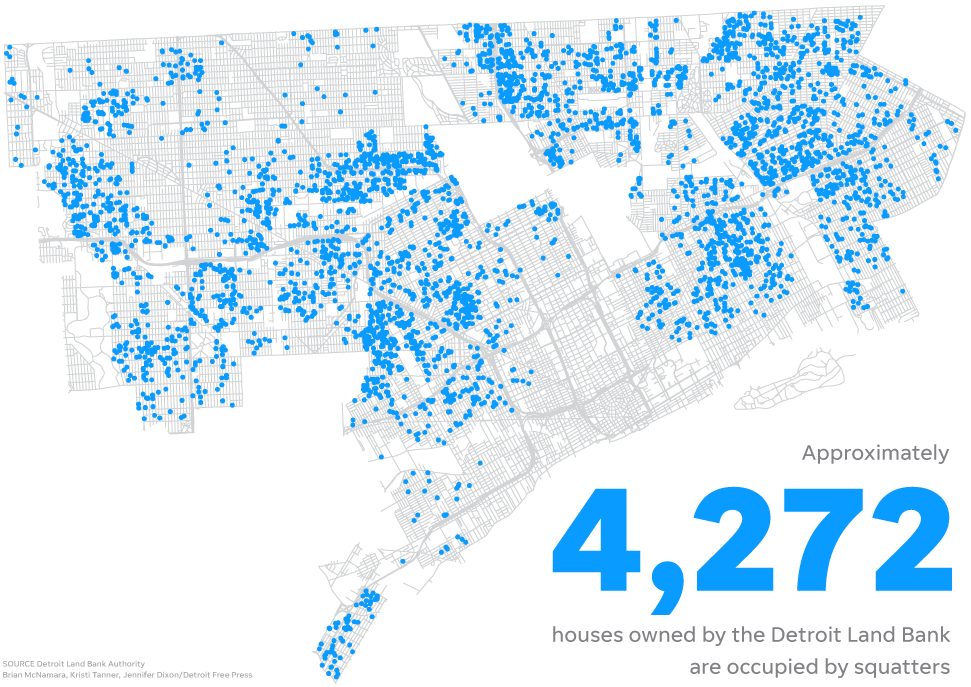How does Detroit Land Bank know how many homes are occupied?

The Detroit Land Bank Authority is the city’s single biggest landholder — owning one out of every four parcels in the City of Detroit.
Large swaths of vacant land, vandalized homes and squatting have created a land use problem unlike any other major city. About one-third of the 95,000 land bank properties have structures on them and about 4,300 of those are occupied, according to land bank estimates.

How did the agency obtain such a vast inventory of property?
The land bank obtains properties in a number of ways. Almost two out of three residential structures — 64 percent — in the land bank’s inventory were transferred from the Wayne County Treasurer. Another 27 percent came from the city's Planning and Development Department and 6 percent were transferred from the state's land bank.
In 2017, Wayne County auctioned off more than 6,500 tax-foreclosed properties. Detroit properties made up more than 90 percent of the parcels up for auction, with unpaid tax bills ranging from $160 to more than $100,000, according to an analysis by Data Driven Detroit.
The number of tax foreclosures in Detroit peaked in 2015 at just under 25,000 properties and has steadily declined each year to an estimated 4,700 properties so far in 2018. Last year, about one in three foreclosed properties was an occupied home. Preliminary estimates predict a similar proportion will be occupied this year, according to a City of Detroit news release in mid-July.
More:
> Disturbing surprises inside these Detroit homes
> The Free Press finds an actual working business that is squatting
> This guy grows these plants on acreage he doesn't own
> Solutions: Other places head off squatters before they're a problem
How does the land bank estimate occupancy?
The land bank uses a combination of computer analysis and human observation to create estimates for the number of occupied structures in its inventory and how to prioritize them for demolition or restoration.
One tool — an occupancy prediction model — to help classify residential properties as occupied or vacant was developed by Geoff Perrin during his tenure as a Bloomberg Associates fellow with the land bank in 2016. Among Detroit parcels, Perrin found that U.S. Postal Service data were the best predictors of occupancy, followed by information from DTE Energy on active electric or gas accounts. Other measures included in this algorithm are monthly water usage, fire and voter registration data.
The occupancy model scores each residential parcel. The higher the score the more likely the property is to be occupied.
In the end, only 339 properties — about 8 percent of the land bank's 4,300 occupied structures — are deemed as occupied by their model score alone, according to land bank records.
The remaining homes were identified as occupied by land bank field staff, a Department of Neighborhoods survey last year, participation in the buyback program or a combination of the factors and their model score.
Kristi Tanner is a computer-assisted reporting specialist who works on the newspaper's Investigations Team.